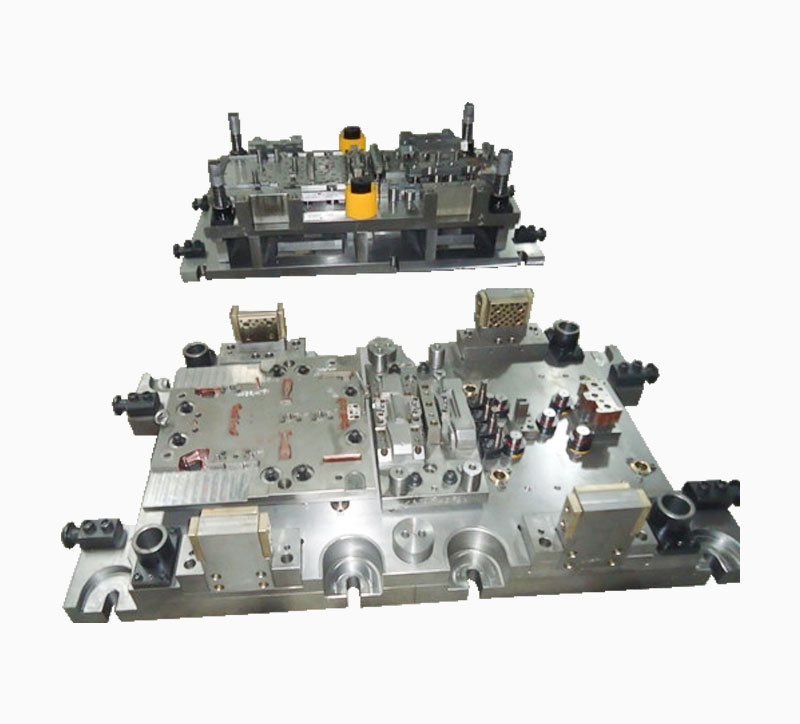Mechanical polishing Mechanical polishing is a polishin […]
Mechanical polishing
Mechanical polishing is a polishing method that obtains a smooth surface by cutting and plastic deformation of the material surface to remove the polished convex parts. Generally, whetstone strips, wool wheels, sandpaper, etc. are used, mainly by manual operation. Special parts such as the surface of the rotating body can Use auxiliary tools such as turntables, and those with high surface quality can use the method of super-finishing polishing. Super-precision grinding and polishing is to use special grinding tools, in the grinding and polishing liquid containing abrasives, tightly pressed on the surface of the workpiece to be processed for high-speed rotation. The surface roughness of Ra0.008μm can be achieved by this technology, which is the highest among various polishing methods. Optical lens molds often use this method.
Chemical polishing
Chemical polishing is to make the microscopic convex part of the material in the chemical medium preferentially dissolve than the concave part, so as to obtain a smooth surface. The main advantage of this method is that it does not require complicated equipment, can polish workpieces with complex shapes, and can polish many workpieces at the same time, with high efficiency. The core problem of chemical polishing is the preparation of polishing solution. The surface roughness obtained by chemical polishing is generally several 10 μm.

Electrolytic polishing
The basic principle of electrolytic polishing is the same as chemical polishing, that is, by selectively dissolving tiny protrusions on the surface of the material, the surface is smooth. Compared with chemical polishing, the effect of cathode reaction can be eliminated, and the effect is better. The electrochemical polishing process is divided into two steps: (1) Macro leveling The dissolved product diffuses into the electrolyte, and the surface roughness of the material decreases, Ra>1μm. ⑵Flicker leveling Anode polarization, the surface brightness increases, Ra<1μm.
Ultrasonic polishing
Put the workpiece in the abrasive suspension and put it in the ultrasonic field together, relying on the oscillation of the ultrasonic wave to make the abrasive grinding and polishing on the surface of the workpiece. Ultrasonic processing has a small macro force and will not cause deformation of the workpiece, but tooling is difficult to manufacture and install. Ultrasonic processing can be combined with chemical or electrochemical methods. On the basis of solution corrosion and electrolysis, ultrasonic vibration is added to stir the solution to detach the dissolved products on the surface of the workpiece, and the corrosion or electrolyte near the surface is uniform; the cavitation effect of ultrasonic waves in the liquid can also inhibit the corrosion process and facilitate the surface brightening.
Fluid polishing
Fluid polishing relies on the high-speed flowing liquid and the abrasive particles it carries to wash the surface of the workpiece to achieve the purpose of polishing. Common methods are: abrasive jet processing, liquid jet processing, hydrodynamic grinding, etc. Hydrodynamic grinding is driven by hydraulic pressure, so that the liquid medium carrying abrasive particles flows back and forth across the surface of the workpiece at high speed. The medium is mainly made of a special compound (polymer-like substance) that flows through at a lower pressure and is mixed with an abrasive. The abrasive can be silicon carbide powder.
Magnetic polishing
Magnetic grinding and polishing is the use of magnetic abrasives to form abrasive brushes under the action of a magnetic field to grind the workpiece. This method has high processing efficiency, good quality, easy control of processing conditions, and good working conditions. Using appropriate abrasives, the surface roughness can reach Ra0.1μm. 2 Mechanical polishing based on this method The polishing mentioned in the processing of plastic molds is very different from the surface polishing required in other industries. Strictly speaking, the polishing of molds should be called mirror processing. It not only has high requirements for polishing itself but also has high standards for surface smoothness, smoothness and geometric accuracy. Surface polishing generally only requires a bright surface. The standard of mirror processing is divided into four levels: AO=Ra0.008μm, A1=Ra0.016μm, A3=Ra0.032μm, A4=Ra0.063μm, it is difficult to accurately control the geometric accuracy of parts due to electrolytic polishing, fluid polishing and other methods However, the surface quality of chemical polishing, ultrasonic polishing, magnetic abrasive polishing and other methods cannot meet the requirements, so the mirror processing of precision molds is still mainly mechanical polishing.
Please Leave Your Email Or Phone Number,So We Can Contact You As Soon As Possible
Contact us
Taizhou Booling Mould Co., Ltd. is a famous China Plastic Moulds Manufacturers and Extrusion Blow Moulding factory,we produces and deals with various injection mould,extrustion blow moulds and plastic mould machinery,etc.



 Languages
Languages